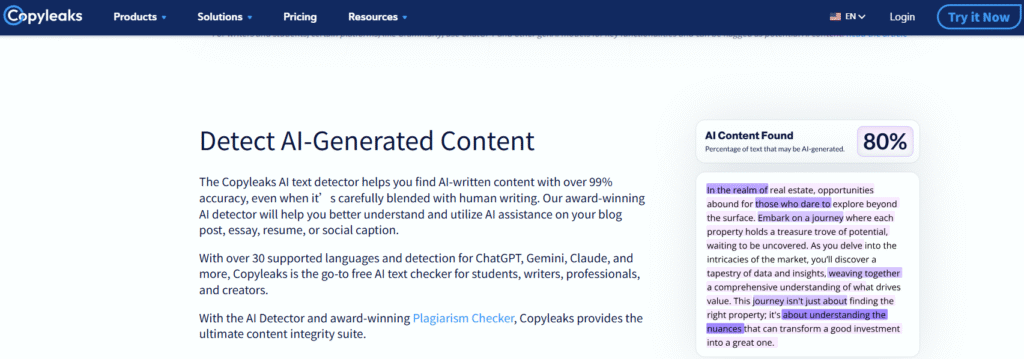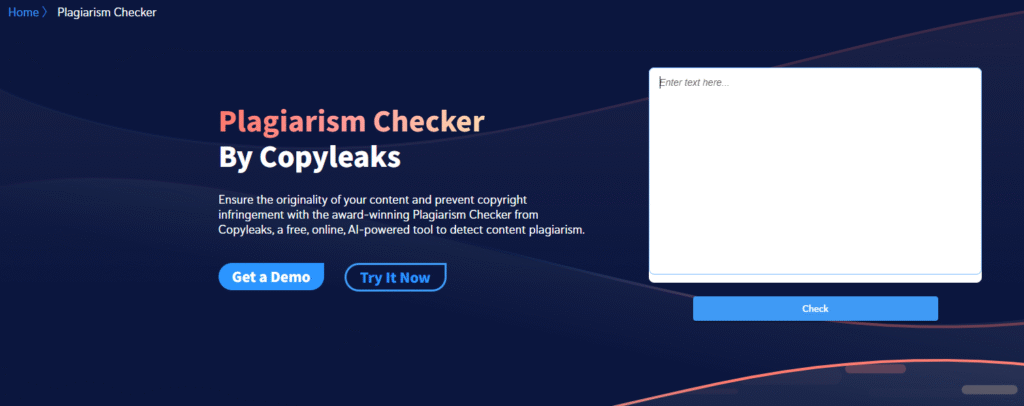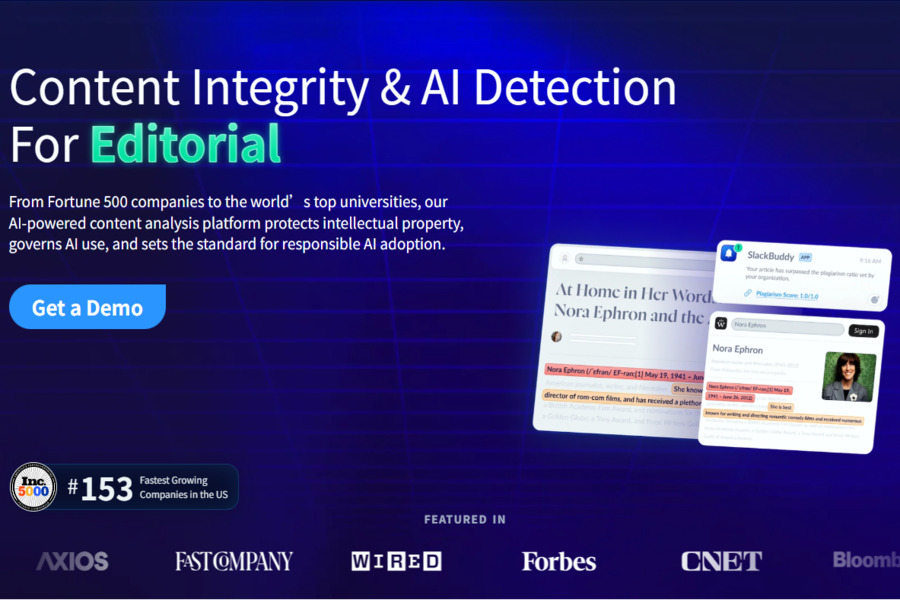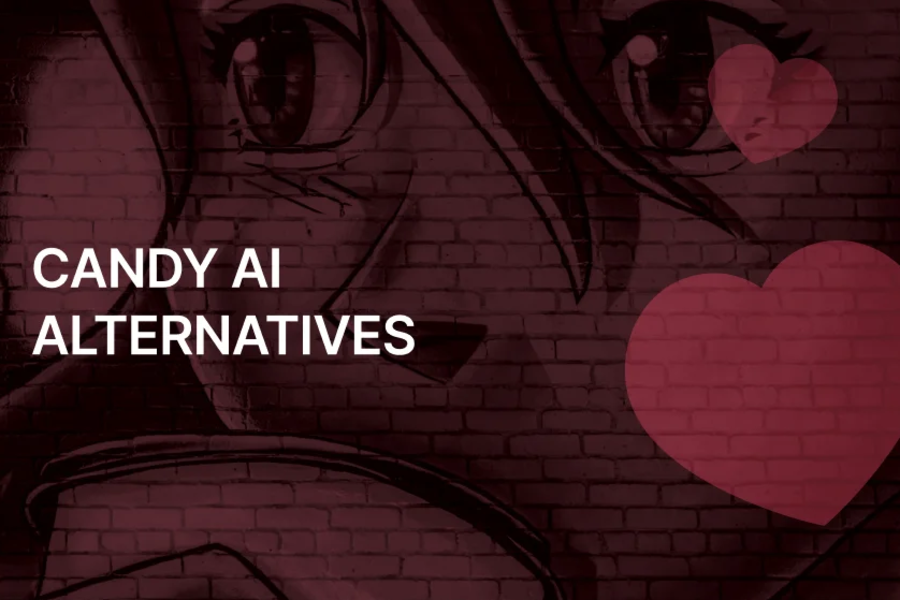If you’re creating, managing, or grading content in 2025, one question is almost certainly on your mind: is Copyleaks accurate enough to trust in an era where AI-generated text can mimic human genius?
It’s a digital detective story, and we’re all looking for a reliable lead. This isn’t just about a simple yes or no; it’s about understanding the tool’s real-world strengths and where it might stumble. We’re going to pop the hood on Copyleaks, examine its engine, and give you the unvarnished truth about its performance.
For anyone serious about content authenticity, knowing your detection tools is as crucial as knowing your creation tools. So, let’s get into the nitty-gritty and find out if Copyleaks is the trusty sidekick you need.
What is Copyleaks AI?
Forget the image of a simple digital magnifying glass. At its core, Copyleaks AI is a sophisticated, multi-layered platform engineered to be the ultimate digital content sleuth. It’s built for professionals, educators, and developers who are absolutely serious about upholding authenticity in written content. Think of it as the ultimate bouncer at the content club, checking IDs and making sure everything is on the up-and-up.
This platform isn’t just a one-trick pony. It’s powered by advanced, next-gen algorithms that allow it to function brilliantly as both a plagiarism checker and, crucially, an AI detection engine. Its primary mission is to discern human-written text from machine-generated passages with a high degree of precision.
Copyleaks AI Pros & Cons
When you’re an AI tool aficionado, you know every piece of software is a trade-off. It’s never just perfect. Here is the breakdown of what makes Copyleaks shine and where it might cause a few headaches.
The Pros: Where Copyleaks Shines
- All-in-One Power Suite:
This is its superpower. Instead of juggling separate tools for plagiarism, AI detection, and writing analysis, you get a seamless, integrated platform. It’s a huge time-saver for teams and institutions, cutting down on tab-switching and subscription chaos. - Truly Cross-Platform Ease:
It works smoothly on your PC, tablet, and phone without missing a beat. There’s no need for separate subscriptions or worrying about format issues. It’s the “work from anywhere” dream, realized. - Developer-Friendly API for Scalability:
For businesses, this is a game-changer. You can bake Copyleaks’ detection powers directly into your own apps, LMS, or workflow using their robust API. This makes it a scalable solution, not just a standalone website. - Generally High Accuracy for Clear-Cut Cases:
When it comes to spotting obvious AI-generated text or direct plagiarism, Copyleaks is a reliable performer. It gives you a solid baseline of confidence for the majority of content you’ll check.
The Cons: Points to Ponder
- Potential for False Positives:
Like all AI detectors, it can get it wrong. Unique writing styles, technical jargon, or non-native English can sometimes be mistakenly flagged as AI. This means you can’t take its word as gospel; a human review is often necessary. - À La Carte Pricing Can Add Up:
If you don’t need the entire suite, the pricing model can feel a bit rigid. Buying features individually might become more expensive than expected, making it less budget-friendly for users with very specific needs. - Free Version is Quite Limited:
The free tier is great for a quick test drive, but it’s primarily a teaser. The most advanced and useful features are locked behind a paywall, which might be restrictive for individual users or small-scale ongoing needs.
Key Features of Copyleaks AI
To truly answer “is Copyleaks accurate?”, we need to examine the specific tools that build its reputation. These are the features that do the heavy lifting day in and day out.
1. AI Detector

This is the feature everyone is talking about. Copyleaks claims an accuracy rate of over 99.1% and compatibility with a wide range of AI models, including ChatGPT, Gemini, and Claude. Its secret sauce isn’t just looking for robotic text; it’s trained to identify the subtle, organic patterns of human writing. It scans for voice fluctuations, stylistic choices, and natural inconsistencies that are inherently human. This nuanced approach makes it a formidable opponent for even the most advanced AI writers.
2. Plagiarism Checker

Copyleaks has long been a leader in plagiarism detection. Its power comes from a colossal database that includes over 60 trillion web pages, thousands of academic journals, and millions of private documents. It’s not just a simple search; it’s a deep audit. A standout feature is its cross-language detection, which supports over 30 languages. This makes it an indispensable tool for international organizations and educational institutions that need to verify content across linguistic barriers without losing accuracy.
3. Source Code Detector
This is where Copyleaks truly separates itself from basic text checkers. It offers sophisticated source code plagiarism detection for popular languages like Python, Java, and C++. It can identify not just direct copies but also cleverly modified or obfuscated code. In an age where AI is generating functional code snippets, this feature is invaluable for software companies protecting intellectual property and universities ensuring students truly understand their programming assignments.
Is Copyleaks Accurate and Reliable?
Copyleaks makes impressive claims, but how does it hold up under pressure? The reality is a mix of robust performance and important caveats that every user must understand.
In controlled scenarios, it excels. When faced with content generated by older or less sophisticated AI models, Copyleaks is highly effective, often flagging it with precision. It serves as an excellent first-line defense against blatant AI use or direct plagiarism.
However, the picture becomes murkier with nuanced content. Its performance can falter when analyzing output from the latest AI models like GPT-4o or Claude 3, which are specifically engineered to emulate human nuance. Furthermore, if a human lightly edits or paraphrases AI-generated text, the detection score can drop significantly, creating a gray area.
The tool also struggles with certain types of human writing, such as highly creative or technical prose, and content from non-native English speakers, often leading to those problematic false positives. Therefore, while reliable as an alert system, it should not be treated as an infallible judge.
Final Verdict on Is Copyleaks Accurate
So, after this deep dive, we return to the core question: Is Copyleaks accurate? The most honest verdict for 2025 is that it is a highly capable and valuable tool, but with clear limitations.
It is exceptionally good at what it’s designed to do: scan large volumes of content and flag potential issues with AI plagiarism or copying. For organizations that need to maintain content standards at scale, it is an indispensable part of the toolkit.
However, it is not a crystal ball. Its accuracy wavers when faced with sophisticated AI outputs, human-AI hybrid content, or unique human writing styles.



